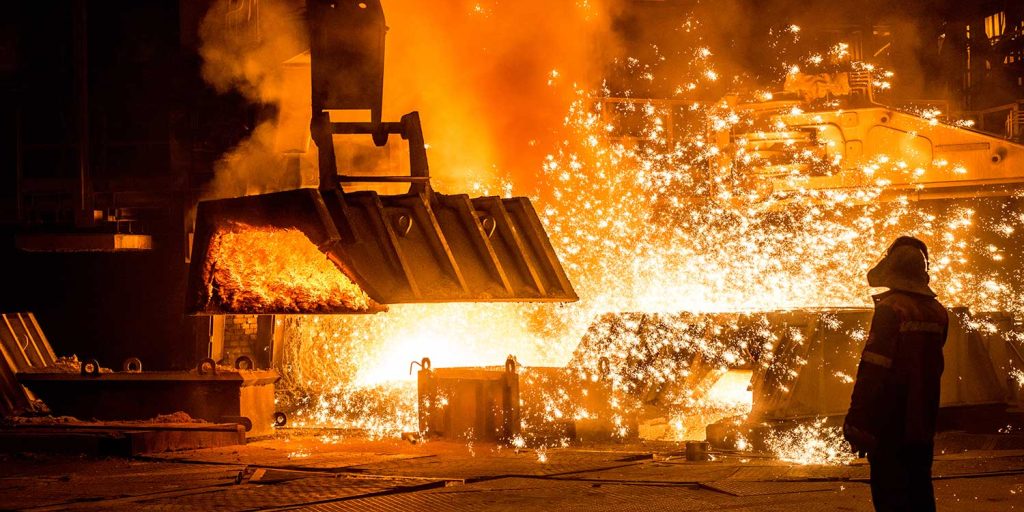The approval of a new coal mine in Cumbria was met with indignant howls of moral outrage by climate campaigners this week. Surely in the 21st century a country like the UK doesn’t need to produce more coal does it? Surely that must be worse for the environment than leaving it in the ground?
To answer those questions honestly we need to talk about steel.
Steel is a fantastic versatile product that can help us decarbonise. Its strong, formable, durable, resistant to corrosion in stainless alloys – and best of all, it’s easy to recycle. Around 630m tonnes, or one third of the world’s 1.9bn tonne annual crude steel, production is sourced from scrap steel. An estimated 88% of steel in end-of-life products is recycled. No other product compares – steel is the worlds most recycled material.
Nowhere is steels pivotal role in decarbonisation more vivid than in the offshore wind industry. 90% of offshore wind towers are made entirely of steel, with each tower containing between 500 and 1,000 tonnes of steel. (The 10% that aren’t made entirely of steel mostly include concrete, which has a high carbon footprint and can only be recycled into aggregate). Even just the “nacelle” – the housing on top of the tower next to the blades – contains up to 300 additional tonnes of steel. The ships that service and construct the wind farms are made of steel; as are the pylons that take the power lines away. These are the windfarms that are steadily decreasing the carbon emissions of the UK power generation sector.
For all its benefits though, nearly all steel’s useful life has a problematic beginning. The two thirds of steel that isn’t from recycled scrap is almost entirely made in Blast Oxygen Furnaces (BOFs) which combine iron ore with coke made from high grade “metallurgical”, “met”, or “coking” coal. Metallurgical coal isn’t to be confused with thermal coal, which is primarily used fuel in power stations. It’s too valuable to be burnt for its heat value alone – often trading at twice the price of thermal coal – and is only used in metal production. About 1.1bn tonnes of met coal is mined and used each year, accounting for about 13% of all coal mined. And sadly it therefore also accounts for around 8% of global carbon dioxide emissions.
More than half of global steel production takes place in China; most of the met coal requirement is imported, particularly from Australia. So too the iron ore, which comes from Australia and Brazil – in gigantic ships such as the MS Berge Stahl which carries 365,000 tonnes of iron ore on each journey from Brazil, with these journeys also contributing to global emissions.

European steel production has fallen to less than 10% of the global total, making Europe a large importer of steel and steel products, most notably from China. That includes large offshore wind farm towers. At 2.2 tonnes of carbon dioxide per tonne of steel, China’s steel industry has the highest carbon footprint of the major producers. Europe’s has the smallest footprint – but what remains of the European steel industry is constrained by insufficient local iron ore (mostly from Sweden and Norway) and met coal.
And this is where we get back to the Whitehaven coal mine – which if approved will produce met coal. If indigenous met coal isn’t produced, what are the alternatives? Either the European steel industry will import more coal from elsewhere – more ships, bad news. Or Europe will import more crude and finished steel products – which probably means more giant ships leaving Australia and heading to China for carbon intensive steel production, as well as more ships of steel heading to Europe.
There are some better prospects, not so much short term alternatives to the coal mine – but additional things that we should be working on which can steadily reduce the carbon footprint of the steel industry, and one day mean we don’t need any more mines anywhere.
We can and should recycle more: but with Europe being an avid recycler of steel already, and the global proportion at 88%, there is a limit to what can be achieved on this front.
By contrast to the mature steel recycling industry, “Green Steel” production – using hydrogen to substitute coke, or other innovative techniques – is its infancy. Its hugely deserving of government support, and regulatory intervention – without which it will not be able to compete with conventional steel on cost basis for the foreseeable future. But the great news is that we already know its technically possible.
In its decision, Cumbria County Council correctly concluded there is no point in stopping a mine in Cumbria, if the consequence is an overall increase in global carbon emissions – even if the extra emissions are conveniently out of sight. The case is now to be reviewed by the Westminster government. Hopefully they will see the same logic– but far far more importantly also see that something is missing here. We don’t need a symbolic but self-defeating gesture over one local met coal mine. What we need urgently is a proper intervention in the steel market. The Renewables Obligation for electricity, the Renewable Transport Fuel Obligation, and Packaging Recycling Notes obligations all provide a good analogies for such an intervention. Users of steel – including the wind farm construction supply chain – could be obliged to source green steel credits proportional to their use of steel (whether of not green steel was actually used in their products), supporting the development of a viable green steel industry and doing something that actually reduces – rather than increases – the 8% of global carbon emissions related to steel production.
